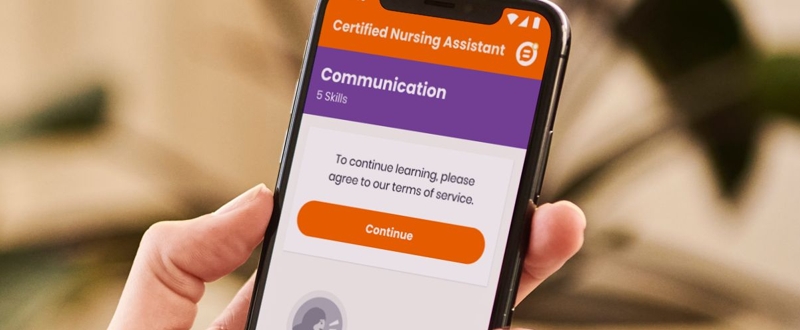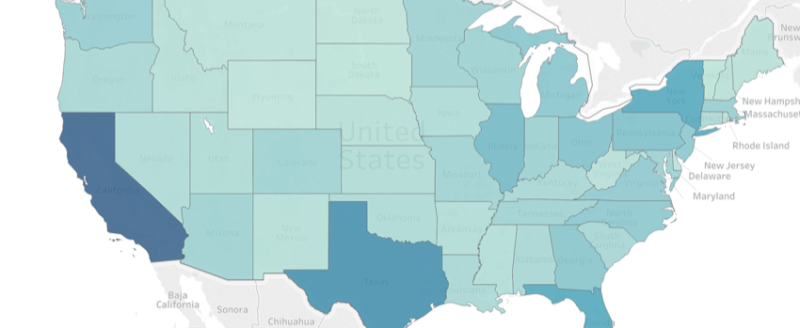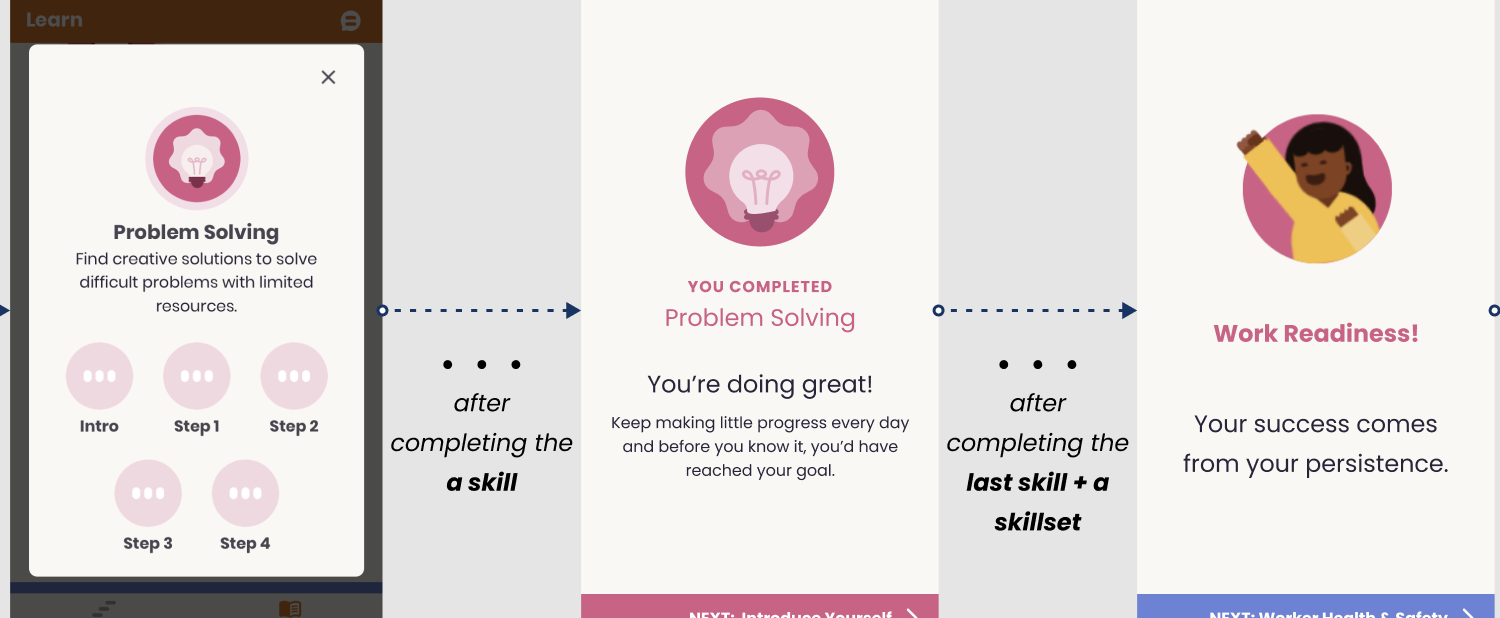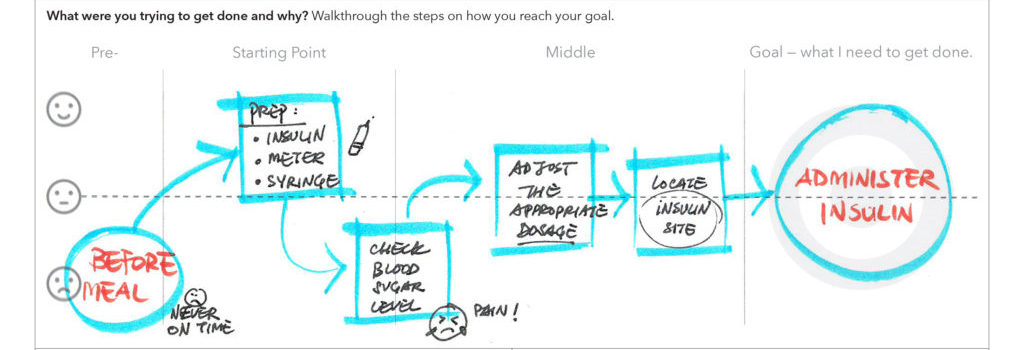TEAM
Darwin, Service Designer / Design Researcher
John C, Senior Product Manager
Jeffery A, Senior Product Designer
RESPONSIBILITIES
• Problem Discovery
• Develop User Story and Acceptance Criteria
• User Experience Design
• Visual Design, UI Design
BACKGROUND + OBJECTIVE
NextStep trains and places learners into a Certified Nursing Assistant jobs. A significant amount of learners were not taking the job placement after graduation even though those learners agreed to the Terms of Service where it stated the acceptance of job placement after going through NextStep program—and they also did not pay for the tuition when they decided to not be placed. Thus, we’re losing revenue opportunities. In order to prevent that, more explicit message needed to be added in the app.
MAPPING CURRENT PROCESS + IDENTIFY INTERVENTION POINTS
Based on the scope of the work — I was tasked to design the Terms of Service (TOS) interventions that required minimal efforts and fast turn around. First, I reviewed the current learner journey processes and figured out points where the TOS can be implemented as early in the user experience as possible. There were 3 areas:
1. During Sign Up
2. During Enrollment
3. During Theory Skill
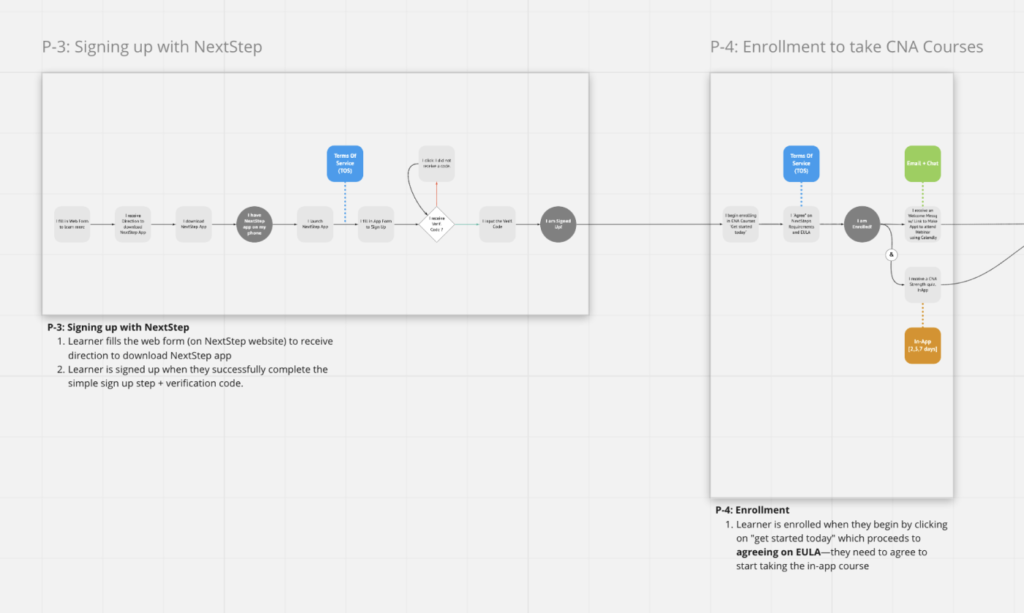
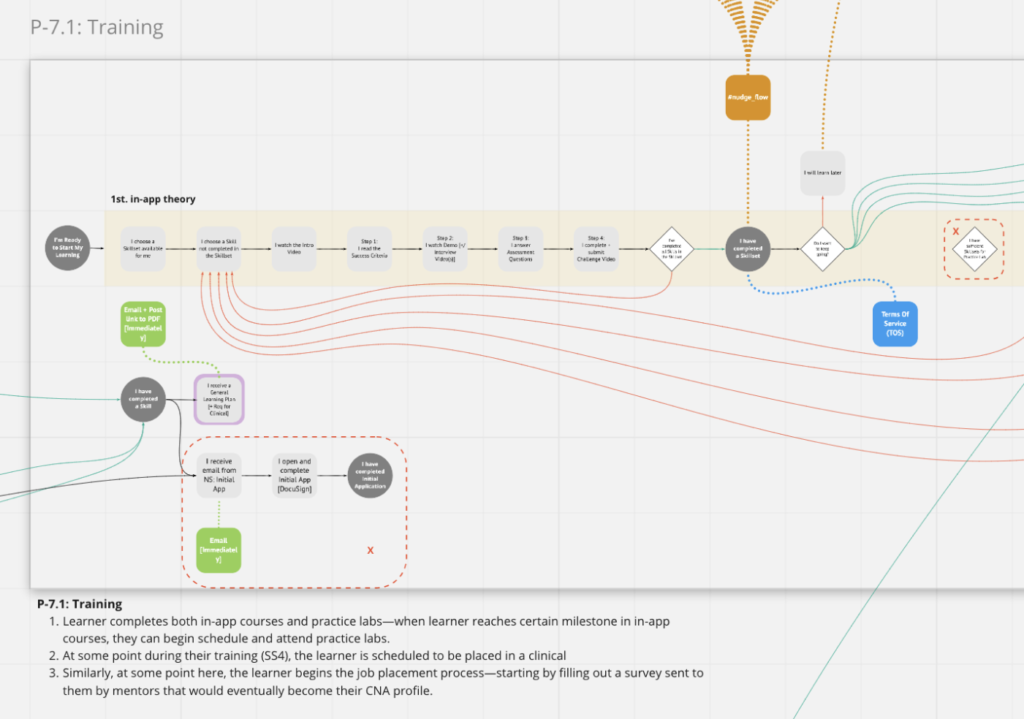
WIREFRAMES + CONCEPT DEVELOPMENT
After the intervention points identified, I wrote the initial draft of the user story and acceptance criteria along with rough wireframes focusing on the 3 areas of interventions. Then, I developed multiple concepts for the user experience and designed new pages for the TOS.

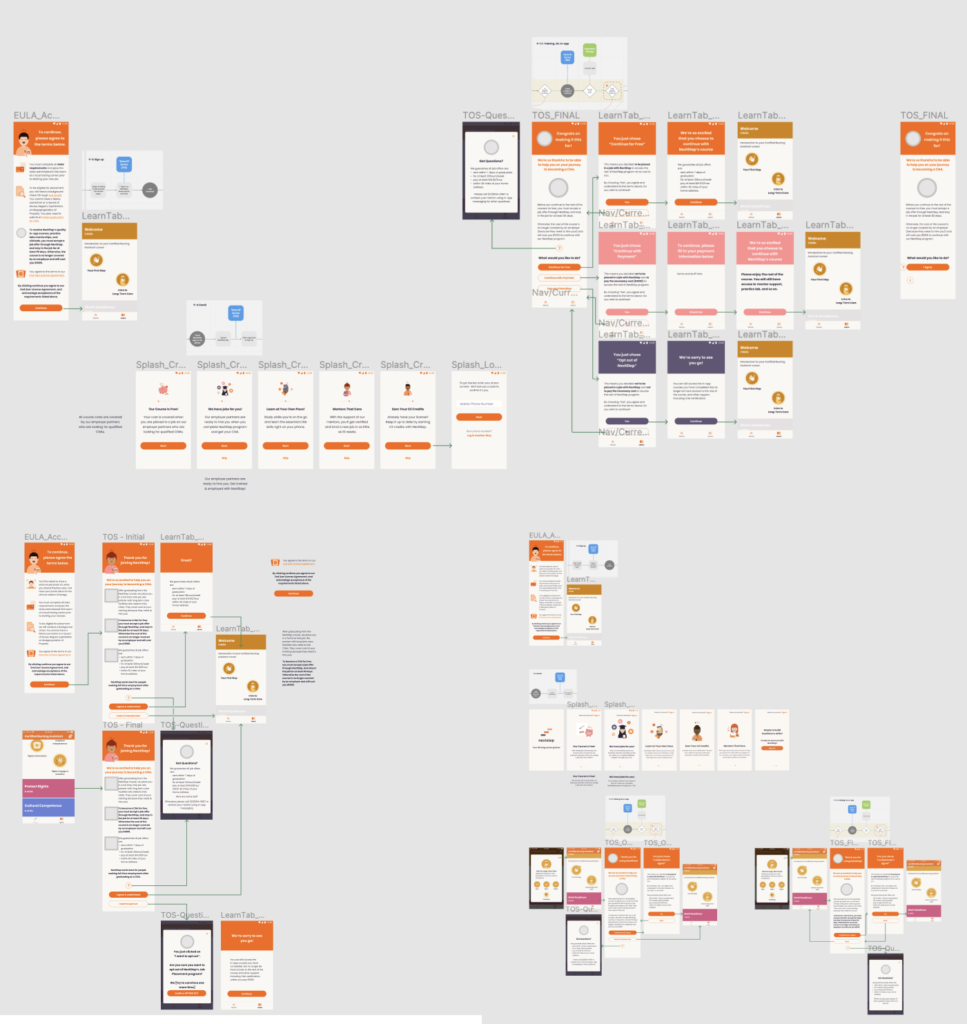
FINAL DESIGN: USER FLOW + DESIGN COMPS + SHIP
After a few rounds of feedback and revisions, the finalized user flow and UI were approved. It was released by the engineering team the following sprint.

I made sure that any additional support on the back-stage, in this case, the Customer Success team, were properly designed and assigned.

But, wait…
SYSTEMIC APPROACH: AUDITING IMPLICIT ASSUMPTIONS
There were risks that was brought up during the development of the TOS. However, since the scope of this work was to test and iterate quickly, the solution suggested was reactive.
Take these inquiries:
1. WHY do we think that by adding these TOS interventions that were text-heavy, learners would read them?
2. WHY do we assume that these TOS interventions would “convert” more learners to take job placement—esp if the “new” information would caught people off guard?
3. WHY are we blocking learner progress with TOS, when we want learner to graduate as quickly as possible?
And so on…
From these preliminary questions, I wanted to examine further where contradictions lie between what we want to do as an organization and what we’re actually doing. Thus, I came up with auditing our organization’s implicit assumptions that were embodied in our interactions with our learners. Implicit assumptions can be defined as what is reflected in our programs, processes, and communications—NOT our individual beliefs.
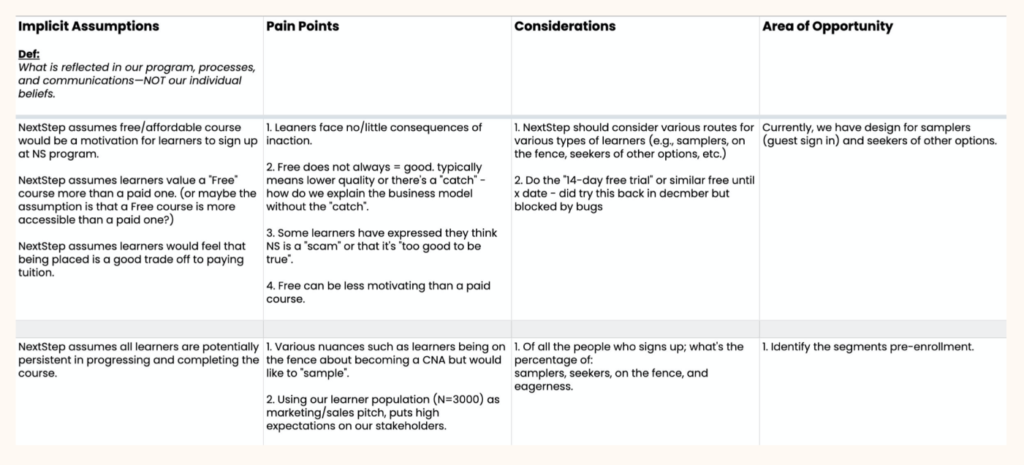
By going through what our product and service actually did, I outlined various contradictions and pain points that learners may (and did) encounter. From there, I developed seven “Experience Principles” — a set of propositions that serves as a foundation of our design. Below are two examples.

USER SCENARIOS
I also developed various user scenarios —based on the personas I developed–where along the phases of their journey, learners decided on various outcomes of their job placements. These scenarios sketched out that there were many openings for learners to “opt out” of our program.
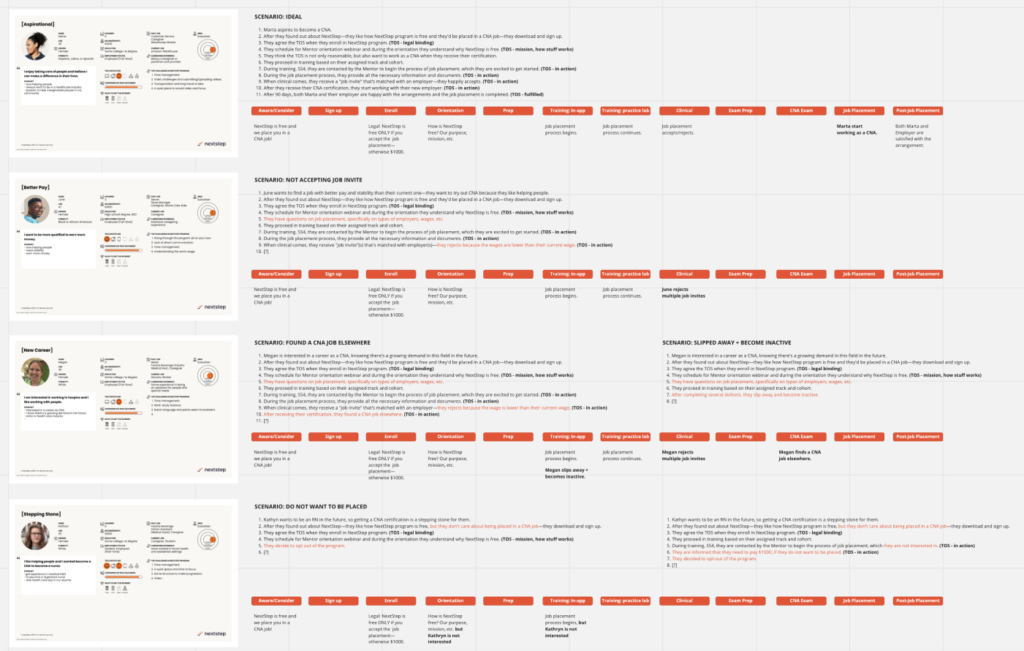
SYSTEMIC APPROACH: CLARITY EARLY ON
By mapping the experience principles onto the learner journey process and referencing the various user scenarios, I proposed a simpler and more straightforward solution. Namely, introducing different options during enrollment to the program:
1. Pay for the education, OR
2. Get your tuition waived, when you want to be placed into a CNA job by us.

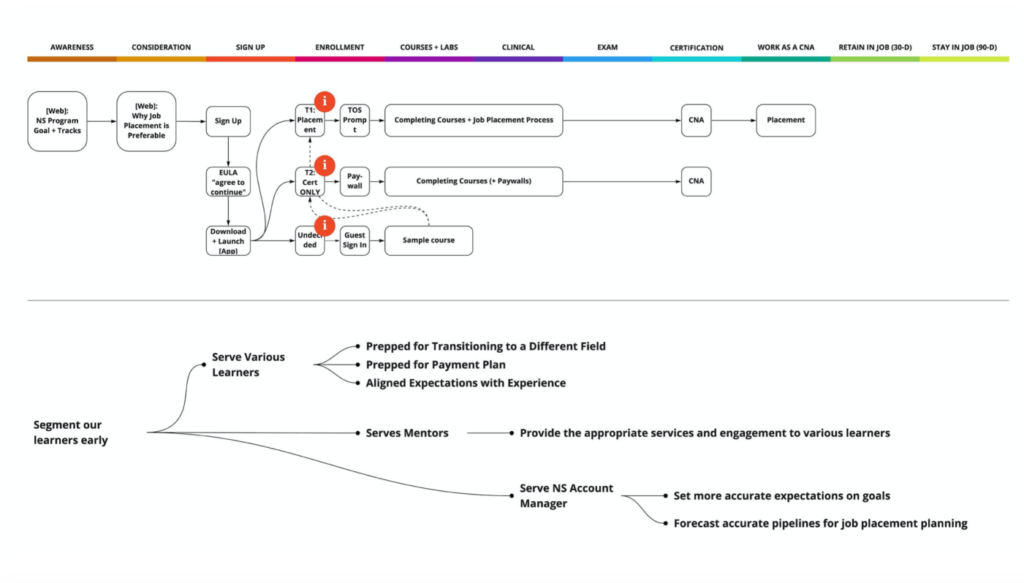
RESULT
Later on, our Product Designer was able to develop a “Track Options” design (below), where the user experience was not only more familiar (since it’s a convention on many online education and align with traditional education as well), but it was not disruptive to the learner’s educational experience because the friction was introduced early on.
The track options does not solve all the problems, but its clarity and simplicity means learners who came into the program know exactly their intentions coming into the program.
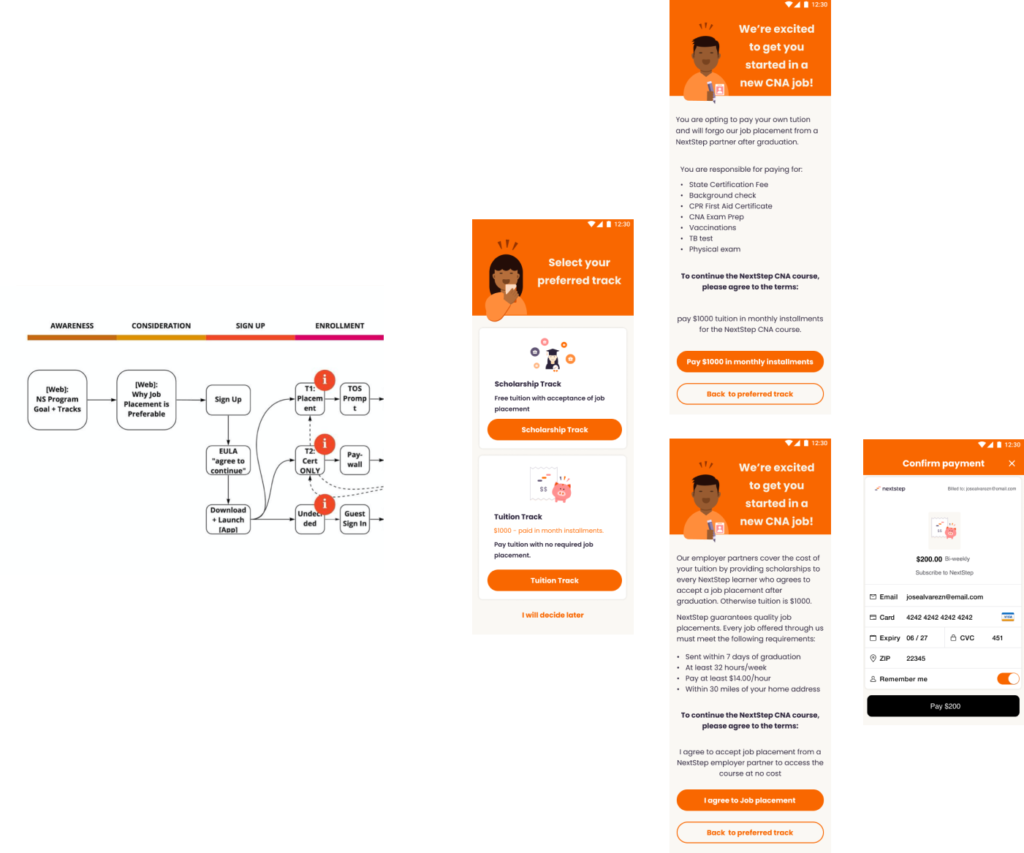
REFLECTIONS
1. It is important to be able to test iteratively and quickly specific concepts to analyze its effectiveness. However, it’s equally important to take a step back and try to look at things from a system’s perspective. Because while testing and iterating quickly has its advantages, many problems and challenges are not discrete and local.

